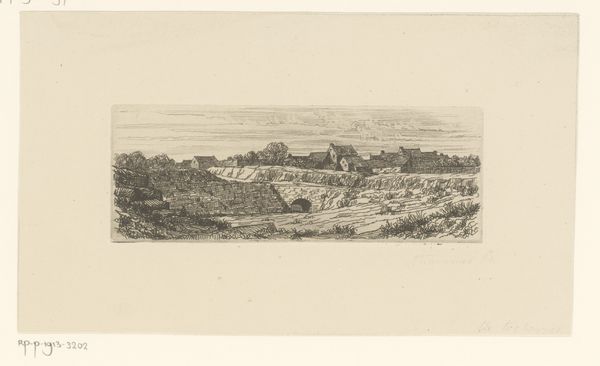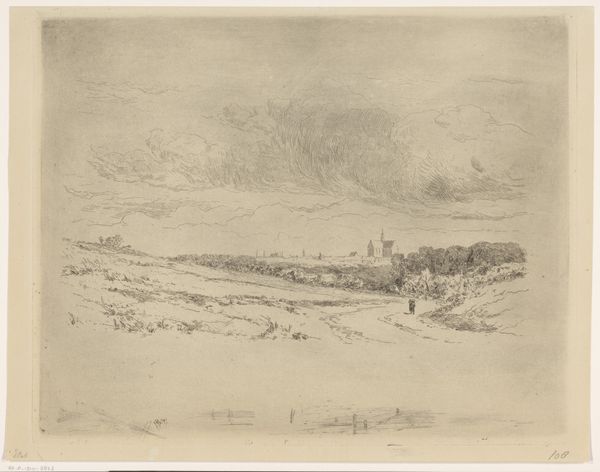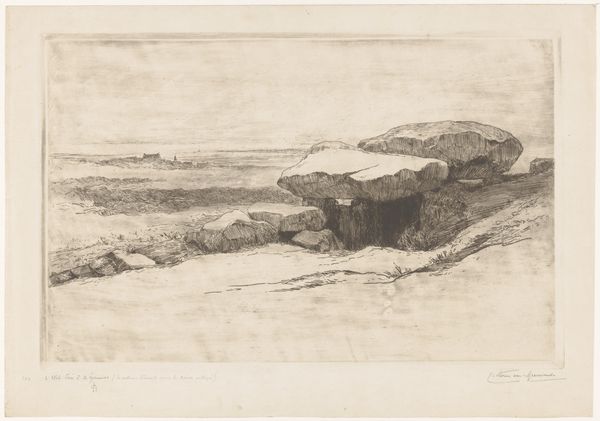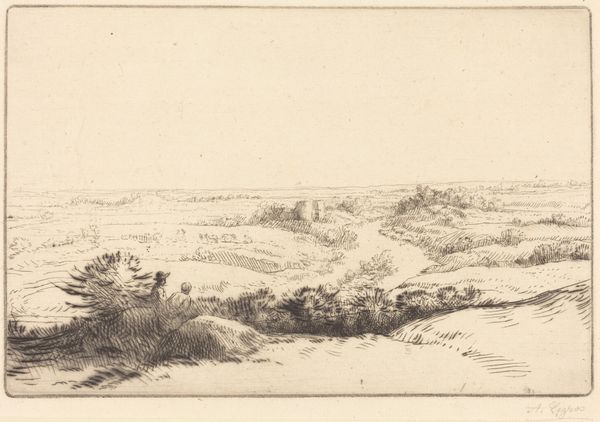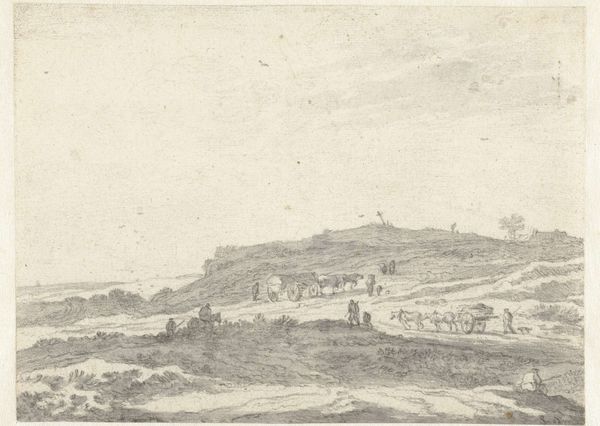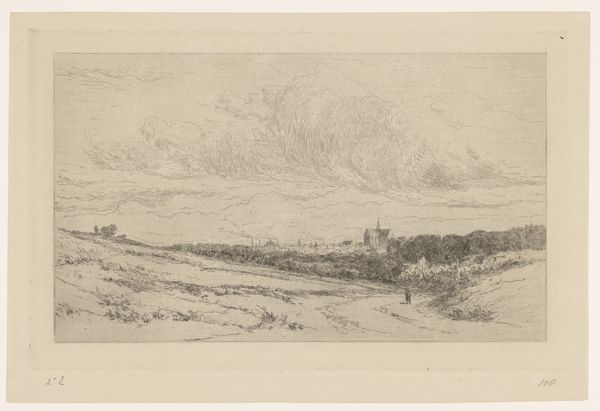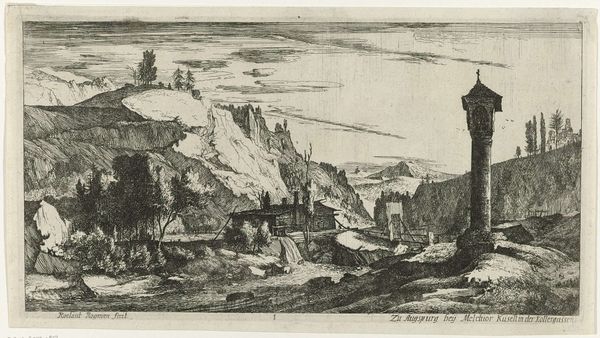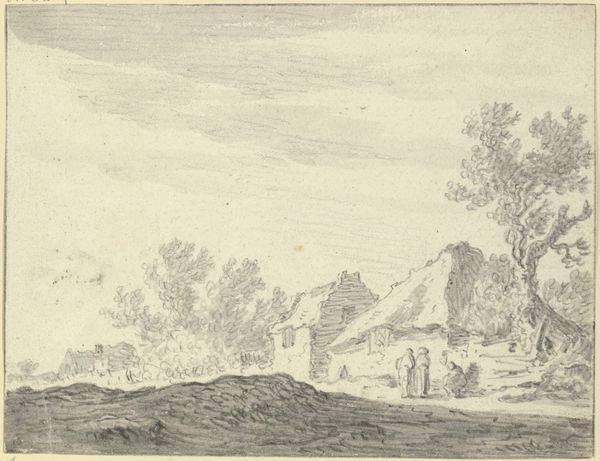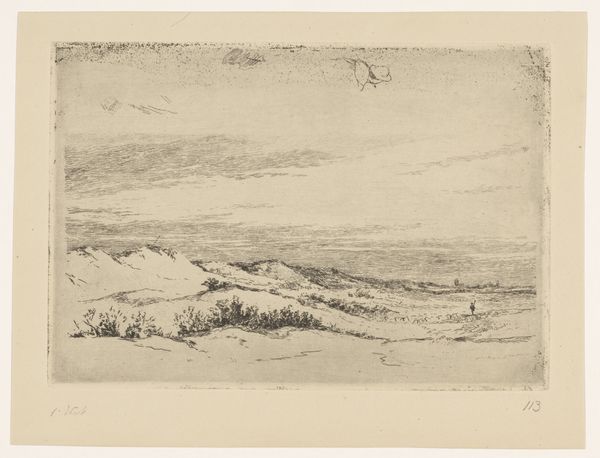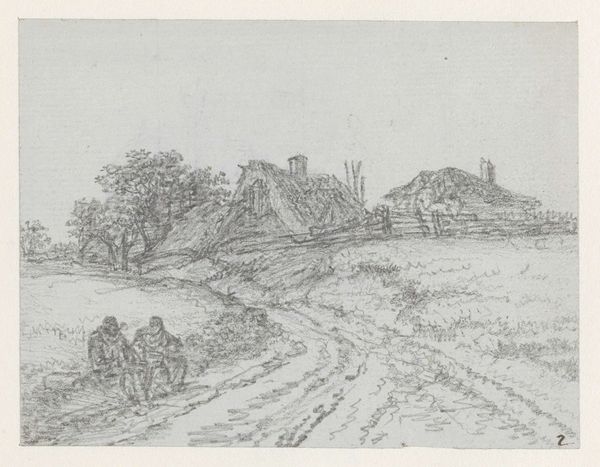
print, etching
# print
#
etching
#
landscape
#
history-painting
#
realism
Dimensions: plate: 16 × 24 cm (6 5/16 × 9 7/16 in.) sheet: 31.3 × 40.4 cm (12 5/16 × 15 7/8 in.)
Copyright: National Gallery of Art: CC0 1.0
Editor: Here we have Maxime Lalanne's "Bastion 66," an etching from 1871. There's a starkness to the scene, with what looks like remnants of a battle or siege. What do you see in this work? Curator: I see a landscape scarred not just by physical conflict, but also by the deep psychic wounds of war. Lalanne masterfully uses etching to depict a world in transition, capturing the feeling of loss and the resilience of the human spirit amid destruction. Do you notice how the seemingly random placement of objects tells a story? Editor: You mean the scattered wood and what looks like a dismantled cannon? How do these everyday objects become symbolic? Curator: Exactly! In Lalanne’s hands, they transform into powerful signifiers. Consider the cannon; a symbol of power, now broken and discarded. And the wood – fuel for survival, perhaps a fragile hope for rebuilding? These carry echoes of past conflicts but also whisper possibilities of renewal. Do you think this symbol speaks to a particular cultural anxiety or collective memory? Editor: Possibly, it seems very representative of a defeated state. The muted tones enhance the feeling of desolation. It's as if the landscape itself is mourning. Curator: Indeed. And by rendering the scene with such realism, Lalanne imbeds these symbols with even greater impact. The memory of such devastating conflict is preserved through these depictions, even carried forth in these visual cues for us to consider today. Editor: I never thought of the everyday objects holding so much meaning. I'll definitely be looking at landscapes differently now. Thanks! Curator: It is a pleasure! Exploring the hidden language of images reveals just how much our cultural stories are woven into art.
Comments
No comments
Be the first to comment and join the conversation on the ultimate creative platform.

